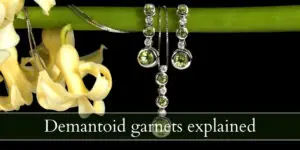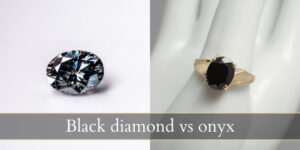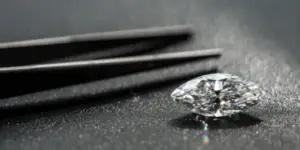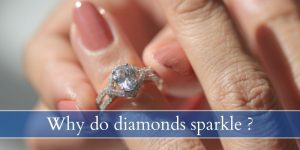Wondering if the emerald cut is the one for you ? Wonder no more as today we’re going to walk you through the emerald cut basics, general price range, and what you definitely need to know before buying !
What is an emerald cut diamond ?
Emerald cut diamonds are a type of step-cut diamonds, in a rectangular shape with clipped corners (called shoulders). The facets on an emerald cut are long, thin, and parallel to each other, forming a hall of mirrors effect. Compared to brilliant cuts the emerald cut does not sparkle as much, since it has far fewer facets and very few of them are at an angle towards each other (only the ones leading down from the shoulders).
So the emerald cut diamond is a diamond that exudes a quiet, subdued charm, some might even say an elegant diamond. It’s certainly not a showstopper, but it can still catch the eye, especially when it’s well cut.
How did the emerald cut originate ?
Emerald cuts are a very old cut, initially inspired by the old table cut (cca 16th century), and was first applied to actual green emeralds. This is because emerald gems are quite brittle so they required a cut that would follow along their natural growth direction. At the time there simply wasn’t enough tech to cut emeralds with more facets and have them be safe and stable. So the elongated table cut with a couple of extra facets was the birth of the emerald cut we know today, very similar to the modern baguette cut.
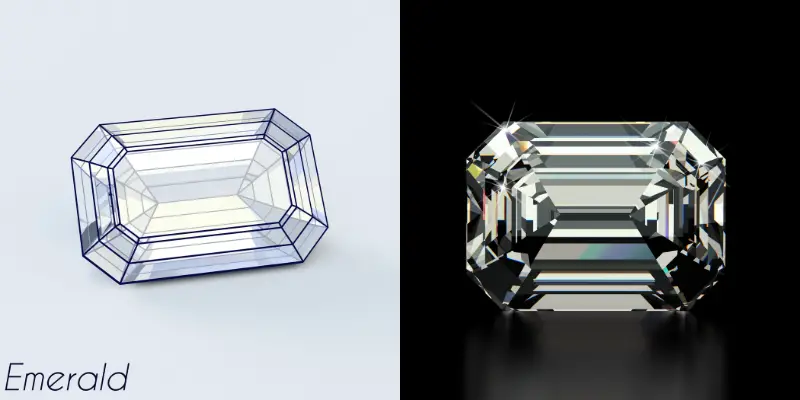
The corners were clipped off to ensure the emerald didn’t have any weak points that were exposed. The name emerald cut stuck, even when this cut style started being applied to diamonds and other gemstones.
What is the best ratio for an emerald diamond ?
The best ratio for an emerald cut diamond is anywhere between 1.30 and 1.50, where the gem is longer than it is wide. Too long and thin will result in a very skinny looking diamond that will not compliment most people’s fingers. Too short a diamond and it will look quite bulky, like a poorly thought out diamond.
One of the biggest charms of the emerald cut is its ability to make the fingers and hand seem longer and slimmer. This only works when the diamond is within the 1.30-1.50 bounds, and the exact ratio you need or find attractive will vary from person to person. We recommend you play around with a few emerald cuts when visiting a jeweler to see exactly what ratio you need.
If you’re looking to add some side stones to your emerald cut then the cut could be longer, as long as the overall look of the ring compliments your fingers.
Read also: Emerald VS Oval Cut Diamonds
What is the best quality for emerald cut diamonds ?
Diamonds that are not round brilliants do not receive a cut quality grade, but there are a few things you can look at to pick out the diamonds that will have the best light performance. The length to width ratio is one of them, along with depth percentage, girdle thickness, and culet.
Length to width ratio should be between 1.30-1.50, whichever you consider works best for you. Depth percentage is how deep or shallow the cut is, how deep the pavilion and crown are; you’re looking for anything between 60-70%.
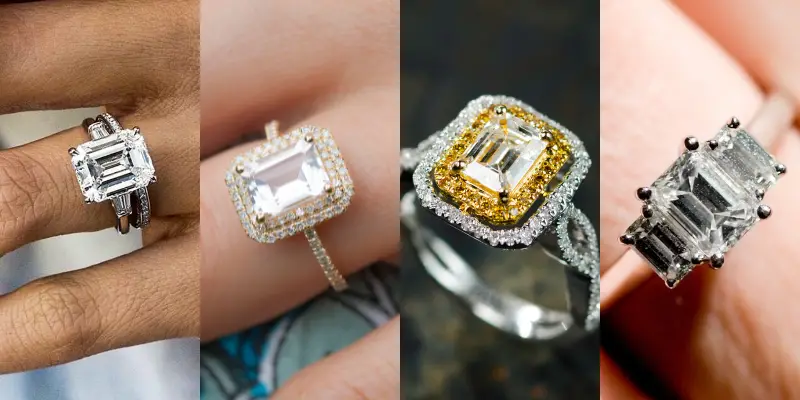
The diamond’s girdle is the thin band or facet that separates the pavilion form the crown. Any thickness between very thin and slightly thick is good, safe, and will not impair light performance.
The culet is there the facets of the pavilion meet. It should always be closed, or marked as ‘none’. An open culet will severely impact light performance.
What is the best color for an emerald diamond ?
We recommend you don’t go lower than an H with emerald cuts, since it may become noticeable or too warm. Emerald cut diamonds are like a series of mirrors, all facing each other. Unlike some brilliant cuts they don’t concentrate the color in the facets but they can reveal the color just as easily if you’re not looking directly into the middle of the diamond.
So if you’re viewing your emerald cut from the side, or at an angle, you might just see through the stone itself and any hint of color will be immediately visible. Of course, this all depends on what color you’re comfortable with.
Is clarity or color more important in an emerald cut diamond ?
Clarity is more important in emerald cuts since these cuts don’t have many facets to hide any inclusions present. So going as low as an SI1 is not good for emerald cuts, we suggest you only go as low as VVS2 in clarity. Anything below that might translate into small but noticeable inclusions, depending on exactly where on the diamond they are.
But since emerald cuts allow you to see right into the diamond, you’ll see the inclusions no matter where they are. So if you’re ever in doubt go for a higher clarity. You can still get a good deal on an emerald cut if you get a VVS2 clarity one with a G or H color.
Read also: Oval Diamond Guide
Are emerald cut diamonds more expensive ?
Emerald cut diamonds are not more expensive than round cuts or other brilliant cuts, because they aren’t as popular. But as you’ve seen you need a fairly clear diamond with good color if you want an emerald cut, and those will always be more expensive than warm diamonds with lower clarity.
So the average 1 carat emerald cut natural diamond with VVS2 clarity and G color sells for about $4,200, and an H color goes for about $3,700. Lab grown diamonds sell for about half the price of a natural diamond, and the even better part is you can get clearer, and whiter diamonds when you shop lab-grown.
What is the best setting for an emerald cut diamond ?
The best setting for an emerald cut diamond is the prong setting, so allow in as much light as possible and showcase the diamond for beauty it is. Emerald cuts are fairly safe and they have no distinct weak points, other then the culet which is always protected, even in a prong setting. If you want some extra protection we suggest asking for a basket/gallery/hidden halo setting.
If you want to be extra careful, then a bezel setting is the safest one you could ask for. The downside is that it allows in far less light than a prong setting, meaning your emerald cut will only catch the light that enters through the crown and table.

I’m the main author for jewelrymaterialguide.com. I started this site after we did tons of research before our wedding and noticed that there is information about rings, jewelry, and so on that is really hard to find on the internet.

